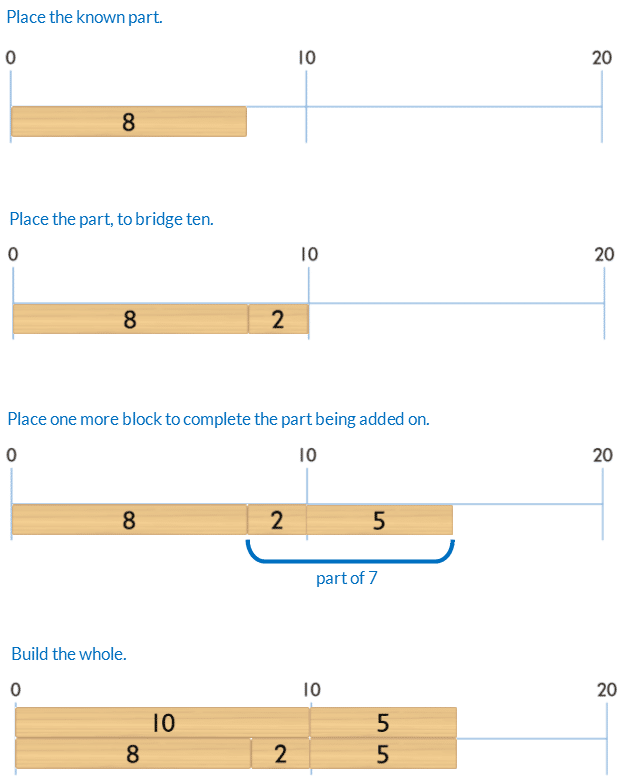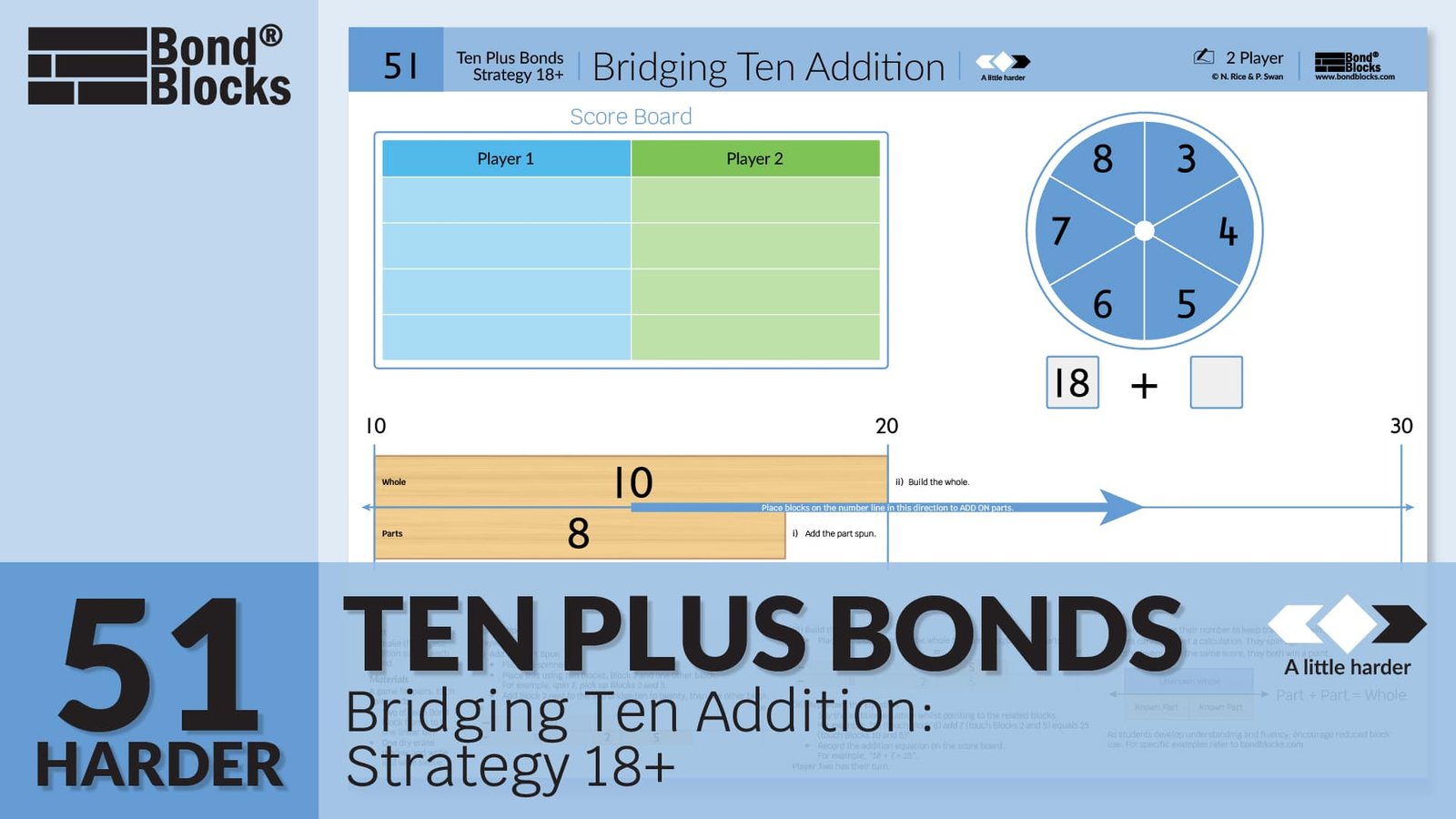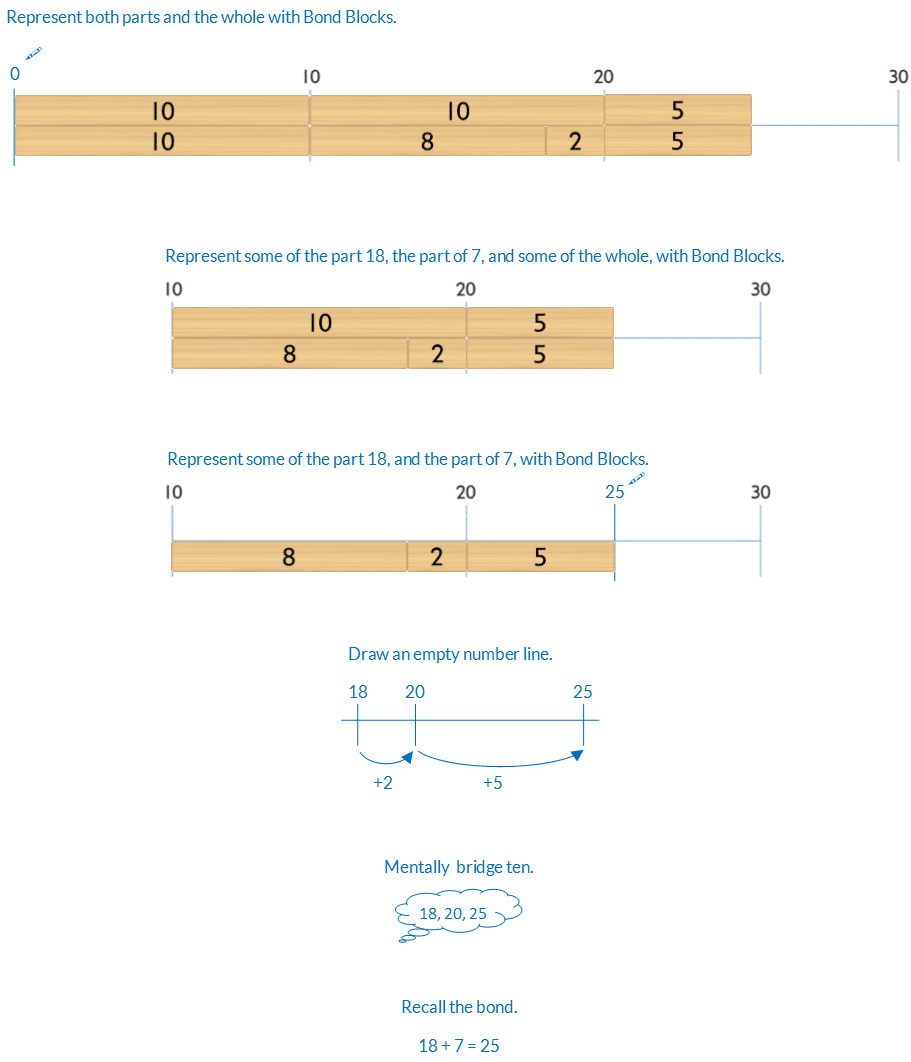51) Bridging Ten Addition
Ten Plus Bonds: Strategy 8+

Mathematics
Develop the addition strategy of bridging ten, from a part of eight, for whol es up to 20.
For example, 8 + 7

Prior knowledge of part-part-whole, bonds of 10 and place value partitioning using ten plus bonds is needed.
Language
- bridge ten
- add
- equals
- sum: the total resulting from addition

Differentiation
A little easier
Scaffold: counting order
Calculate each question in counting order, working clockwise around the spinner, from the 12 o’clock position. Do not flick the spinner. Assist students to identify patterns.
Sequence: step by step
If students have difficulty partitioning the second part, into one plus another part, use an additional block.
For example, to model 8 + 7

Some students find it conceptually easier to first place the 8 and 7 blocks. Then place the 2 and 5 on top of the 7 block.
- From a top view they can see the bridging ten partition, 8 + 2 + 5.
- From a front view they can see the parts of 8 and 7.

A little harder
Bridging ten addition strategy 18+
Play “Ten Plus Bonds: Bridging Ten Addition Strategy 18+ a little harder”. In this game students have to bridge ten, to twenty, from a part of 18, for wholes up to 30.

Reduce Scaffolds
The blocks are a scaffold to support calculation. If students can calculate without some or all of the blocks encourage this. Below is a progression of reducing scaffolding, from most to least support, using bridging ten for 18 + 7.

Progression
In the next activity students generalise bridging 10 to adding a part of 7, 8 or 9. Go to
Activity 52
Ten Plus Bonds: Bridging Ten Addition, Strategy 7, 8, 9+
